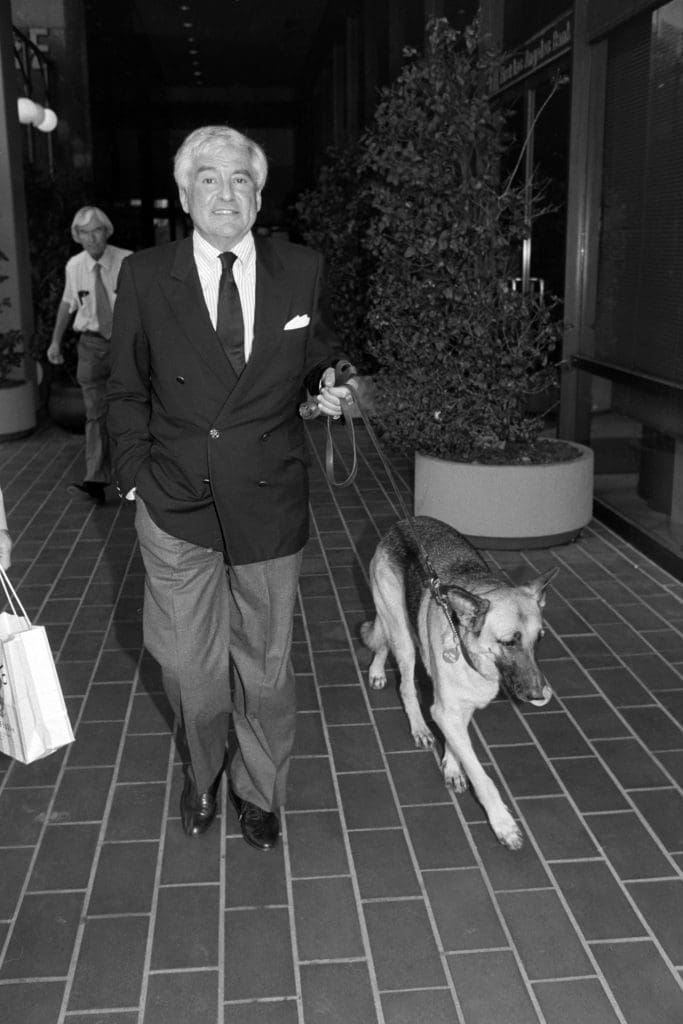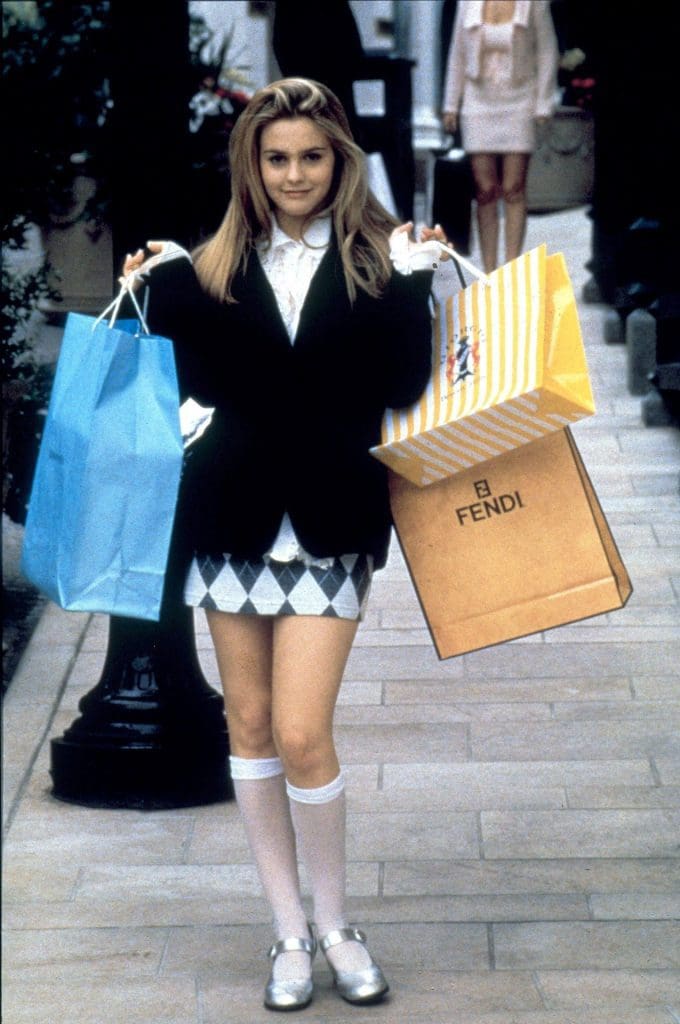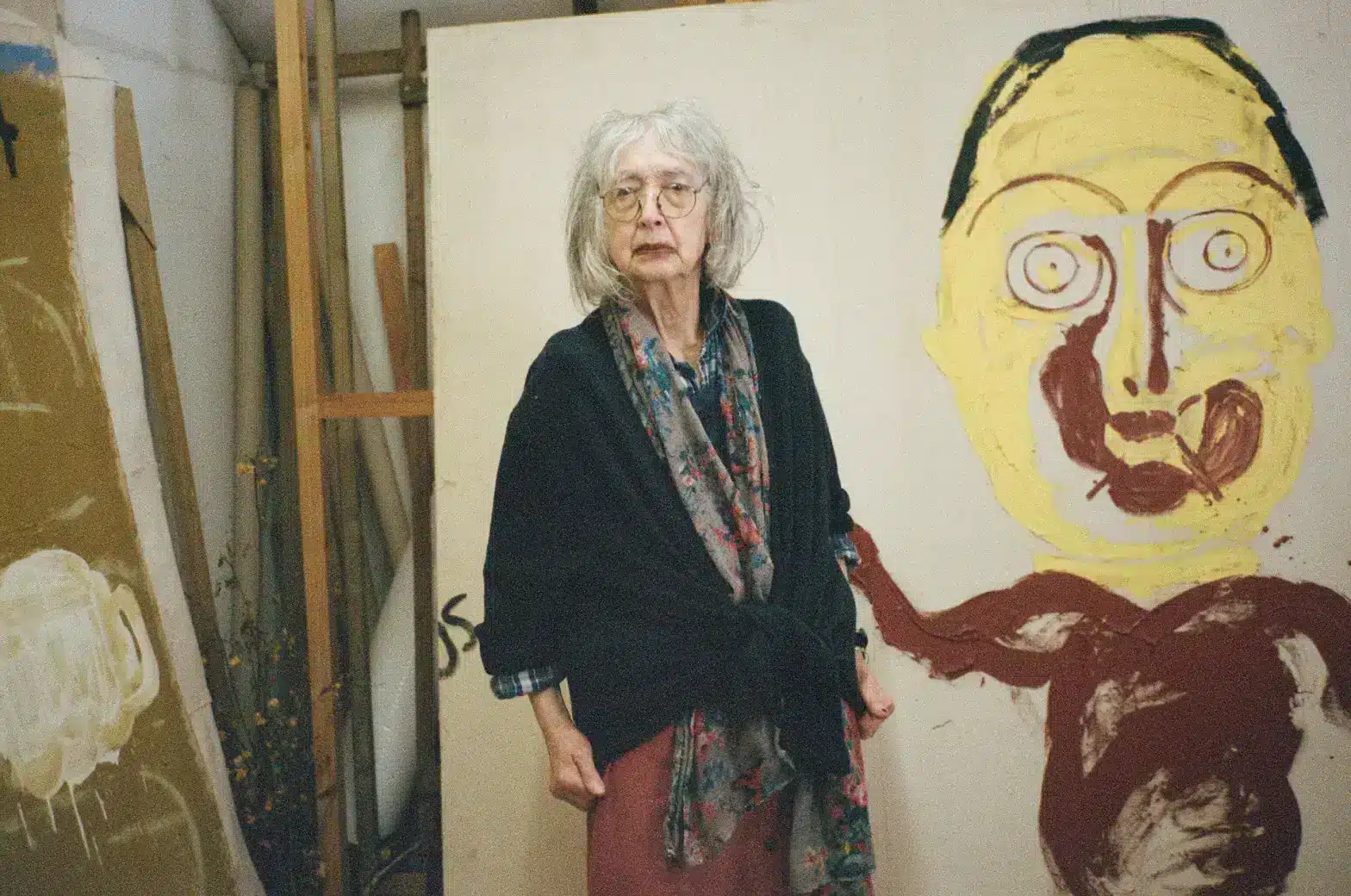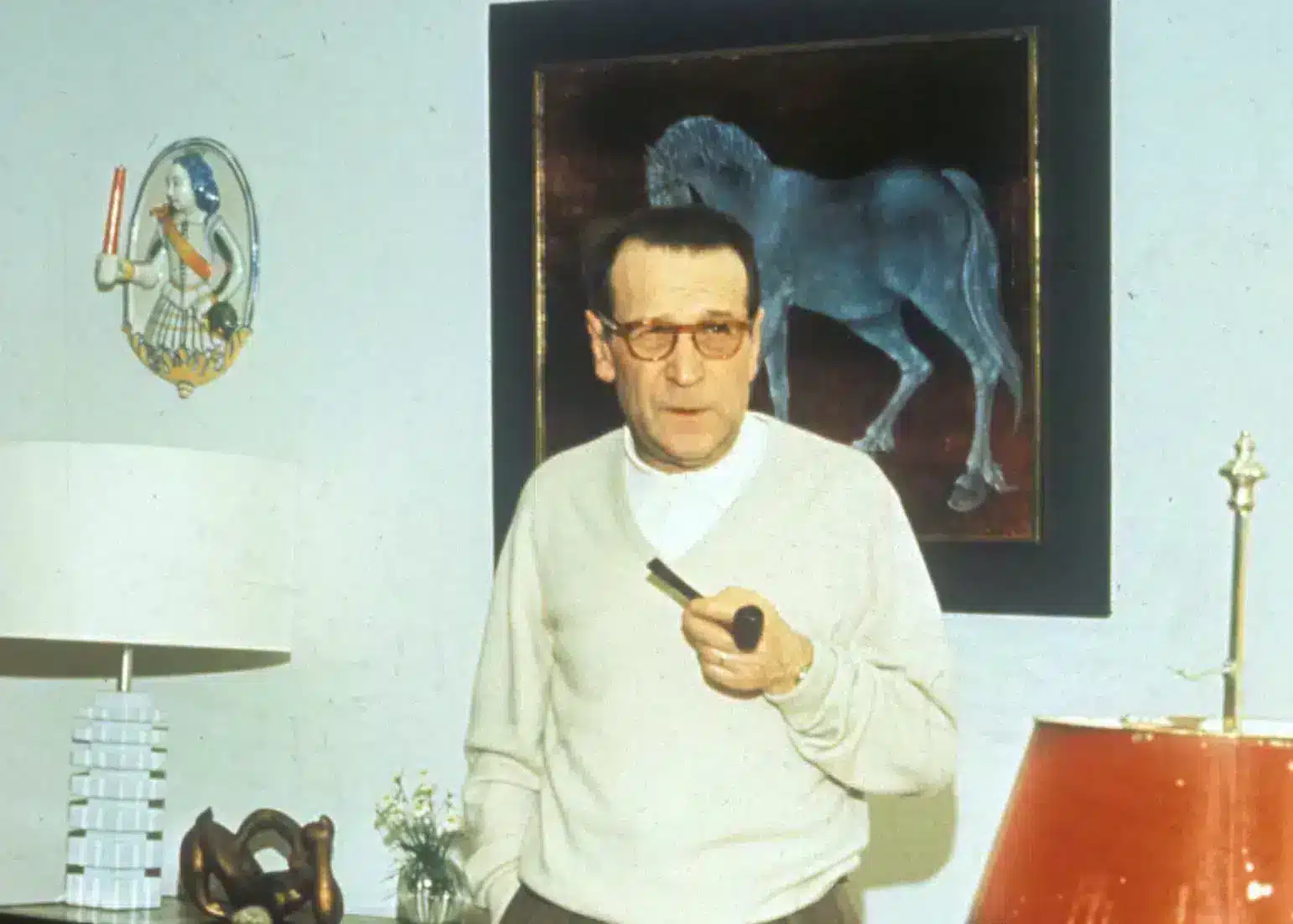
Before the pioneering retail impresario Fred Hayman came along, Beverly Hills’ famed Rodeo Drive was a nondescript street populated by a gas station, a grocery store, and a hardware store.
Hayman didn’t just make Rodeo Drive the fashion mecca it is today, but he introduced Los Angeles to international high fashion. He was the first in his field to make retail shopping an “experience”.A consummate showman, he epitomised the era of 1980s excess. Giorgio of Beverly Hills became synonymous with luxury and conspicuous consumerism. The store, according to the The New York Times, “eventually became the fashion playpen of the rich and famous, a catalyst for transforming the street”.
After introducing East Coast designers to the Los Angeles fashion scene, he gave Hollywood celebrities a fashion makeover on how to wear their clothing, transforming fashion into a starpowered business. He was the original ‘celebrity stylist’, dressing female stars for the Academy Awards, and his innovation in styling celebrities for the show’s red carpet entrance eventually became an international TV phenomenon, as popular today (if not more) than the Oscars themselves.
Hayman’s landmark store, Giorgio of Beverly Hills—positioned at 273 Rodeo Drive with its distinctive signature yellow-and-white striped coloured awning—attracted devoted celebrity clients such as Elizabeth Taylor, Jacqueline Bassett, Shirley MacLaine and Ali McGraw. They relished the retail concept of “shop entertainment” where they could relax and drink while buying expensive outfits and gowns.
Born Fred Pollag in St. Gallen, a Swiss textile town east of Zurich, Hayman arrived with his mother and father in New York City in 1942. They were European Jews fleeing the threat of Nazism. At 16, he dreamed of becoming a chef, and as a teenager, he talked his way into an apprenticeship in the kitchen of the grand Waldorf-Astoria Hotel. A young Hayman was later promoted and became banquet manager, helping oversee the whims of such guests as the Duke and Duchess of Windsor. The splendour of the Waldorf-Astoria would indelibly shape Hayman’s aesthetic. In 1954, Conrad Hilton, the Waldorf’s owner, personally designated Hayman to move to Los Angeles as the banquet manager for his new, modern, three-pronged tower: the Beverly Hills Hotel.
In 1961, the 38-year-old budding entrepreneur founded Giorgio of Beverly Hills along with George Grand (whom he later bought out in 1962), located on the corner of Rodeo Drive and Dayton Avenue. “Rodeo Drive was primitive then,” Hayman was quoted as saying. It was no more than an affluent but quiet village, and Hayman wanted to make its Rodeo Drive equal to such world class boulevards as London’s Bond Street, New York’s Fifth Avenue, and Paris’ Avenue Montaigne. By the 1970s, Hayman had transformed Rodeo Drive into an international shopping thoroughfare by recruiting Giorgio Armani, Gucci, and Tiffany to establish adjacent, independent boutiques.

From the start, the consummate concierge quickly applied his hospitality driven approach to his expanding store. The retail visionary made shopping an experience. It was a time when celebrities still bought their own clothing (and didn’t expect a discount). Hayman’s in-house cocktail bar (with bartender), according to The Los Angeles Times, was the “site of a 10 a.m. pick-me-up—on the house, naturally—the place where Elizabeth Taylor could order a glass of white wine while she shopped”. Or a tall, frothy cappuccino sprinkled with chocolate flakes on top. The store was teeming with an array of A-list clients, all of whom adored the hospitable Hayman, including a selection of stars spanning the history of film: Princess Grace, Barbra Streisand, Joan Collins, Jane Fonda, Natalie Wood, and Diana Ross. That’s not to mention Rita Hayworth, Ava Gardner, Norma Shearer, Janet Leigh, Joan Rivers, Candace Bergen, director Vincent Minelli with his daughter, Liza, Angelica Huston, and Nancy Sinatra (with her dad, Frank, who would happily sign autographs for customers when he came to Giorgio for his pastel-hued cashmere pullovers and a round or two of pool). Lucille Ball brought her pet chimpanzee, Candy, to visit. Doris Duke, then the richest woman in the world, asked upon stepping inside the store: “Where’s your sales rack?”
The articulate and charming Hayman—naturally dressed in a Brioni navy blue jacket, custom shirts made in Paris, a yellow tie, gold square cufflinks, and accompanied by his Alsatian, Chumley— lent his hotel hospitality expertise and set up a wood panelled space in the main showroom with a pool table and newspaper rack to keep male stars such as Richard Pryor, Motown founder Berry Gordy (who brought The Jackson 5), and producer Robert Evans entertained. Evans would accompany his wife, Ali McGraw, who later returned with her next husband, Steve McQueen, the latter of whom was inevitably found hitting the bar. He stood by impatiently brooding while McGraw or the other mens’ wives shopped to the point of excess and spent all of their husbands’ money. A young Melanie Griffith sipped a soda, her bags at her feet, as she waited for her boyfriend, Don Johnson, to screech up in the latest swanky, high-powered sports car. Old-timers Milton Berle, Jack Lemmon, and Walter Matthau took pleasure in coming into the store to just stand at the bar and trade wisecracks. Cher and Jerry Hall savoured designer Stephen Burrows’ Technicolor collection of sexy and easy-to-wear rayon jerseys and stretch wool sportswear. Clients arrived in double limousines: one for the family, another to transport their purchases afterwards. The director Robert Altman came to research the fashion film Pret-a-Porter.
The former hotelier’s exacting hospitality was famous for its personal touch. Hayman wrote hand-written thank you notes to customers and placed personal calls to celebrities to let them know that the store had just received a Halston gown ideal for them. He arranged for special purchases in glossy yellow-and-white striped paper bags to be delivered to their home in a 1952 Silver Wraith Rolls-Royce. He travelled to New York and personally wooed sceptical, prestigious East Coast designers to come West and stock the racks of Giorgio: Halston, Bill Blass, Thea Porter, Calvin Klein, and Arnold Scaasi among them. He travelled to Europe and established relationships with designers Karl Lagerfeld, Thierry Mugler, Claude Montana, Sandra Rhodes, Christian Dior, Hubert de Givenchy, Jean-Paul Gaultier, and Valentino, and he convinced them to sell their clothes and gowns in his boutique. Landing their designs at Giorgio eventually became a status symbol for East Coast designers. After first launching her seminal wrap dress in the 1970s, Diane von Furstenberg flew out to Los Angeles and drove directly from the airport to the store. “I remember I walked into Giorgio Beverly Hills with my Vuitton suitcase full of jersey dresses,” said von Furstenberg. “He gave me an order of one hundred silk long dresses. Ali McGraw, Candice Bergen and Rita Hayworth bought them. I was very proud”.
Hayman’s third wife, Gale, played a powerful role in recruiting designers—as well as creating the fragrance Giorgio of Beverly Hills. The unusually potent scent was an immediate hit across the country, racking up $100m in wholesale sales by its fourth year. They also invented the scent strip, a perfume-drenched card embedded in magazines. The 1981 launch party of their Giorgio of Beverly Hills Fragrance—a combination of jasmine absolute, attar of roses, and gardenia packaged in Giorgio’s signature yellow-and-white stripes—was one of Rodeo Drive’s most over-the-top events. More than eighty pounds of caviar were served. Outside, the trunk of a Rolls Royce was filled with bottles of the $150-an-ounce perfume and given to departing guests.
Hayman’s subsequent divorce from Gale, whom he had met when she was a cocktail waitress at The Beverly Hills Hotel, was not such a happy affair. After years of acrimonious legal battling, they finally settled on giving each other a 49% interest in the store, with Fred also receiving a 2% trust in it which gave him a controlling interest. The legal wrangling continued until, in 1987, under pressure from the continuous lawsuits, Hayman sold his still wildly successful fragrance and the Giorgio brand for $165m to Avon Products. Following the sale, Hayman changed the name of the shop to Fred Hayman Beverly Hills, which continued to be a success. He created a new successful scent called 273 and launched it in grand style with a $1m party that included, of course, stars such as Bette Midler, Mitzi Gaynor, and Stephanie Powers. Composer Marvin Hamlisch created an original song for the occasion; the University of Southern California gathered in full regalia outside the store.
Naturally, there were Hayman’s two party staples: oversized tins of Beluga caviar and a 100-member Mariachi band. “Fred was the first to make shopping sexy, to make it fun,” the best-selling novelist Judith Krantz observed. “He had the lights, the action, the glamour, and the stars.” Krantz knew her subject matter: Giorgio of Beverly Hills was the model for her first novel, Scruples, the 1978 number one bestseller about shopping, sex, and social climbing in Beverly Hills. Jackie Collins soon followed, making larger-than-life mythology of the Reagan era’s big-shouldered, power-suited divas. “I based my book Hollywood Wives on the shopping habits of the very famous women who would have lunch at Ma Maison and then move on to the fabulous Giorgio!” said Collins.
Hayman treated everybody, whether rich or poor, famous or not, as if they were all welcome guests in his home. “A woman in a nurse’s uniform and sneakers might buy a $2,500 dress,” he said. “You never know. We had the daughter of the Shah of Iran come in here one winter, barefoot and in shorts.” On the other hand, he had to close down the store after an Arab sheikh and his harem came inside and bought every evening gown the store owned.
Hayman was a trendsetter with his use of mixing high and low items throughout the store. He juxtaposed a $5,400 sable-trimmed Bill Blass gown or a $2,000 red strappy Giorgio di Sant’ Angelo with $195 Norma Kamali dresses, $10 cotton totes bearing the Giorgio crest, and a mountain of Giorgio tee-shirts.
The tee-shirts paid off. Zsa Zsa Gabor gave Giorgio an unexpected dose of publicity after she was pulled over for driving inebriated in her Rolls-Royce. The penultimate diva was sentenced to 72 hours in prison. She entered the prison defiantly among a crush of photographers and news crews and clad in a Giorgio tee-shirt, a bright yellow Giorgio sweatshirt, and carrying an oversized yellow Fred Hayman tote. “Did you see me on the TV, Fred, darling?” Gabor telephoned Hayman following her release.
Giorgio will be forever remembered for its appearance in two films, Pretty Woman and Clueless. In the 1990 romantic comedy, Richard Gere, playing an egregiously wealthy corporate raider, adopts a sex worker played by Julia Roberts. They ultimately fall in love, but not before Gere sends her off on a Rodeo Drive shopping spree. Her street-like appearance and cheap clothing prompt a boutique to snub her by refusing to wait on her. When Gere hears of the incident, he escorts Roberts into the far more receptive Giorgio where he pronounces that they will be spending “an obscene amount of money”. Roberts does indeed spend a tonne of money (in addition to ordering a pizza to the boutique). Afterwards she returns to the original store and the saleswoman who had rebuffed her based on her unfashionable attire. Brandishing a bevy of shopping bags in her hands, she utters the iconic line: “You work on commission, right? Big mistake. Big. Huge.” It was a pump-fisting, triumphant moment for every woman who had ever been mistreated or ignored after entering a high-end store.

When the 1995 pop culture phenomenon Clueless was released, the film highlighted Giorgio after a down-and-out Cher, played by Alicia Silverstone, takes to Rodeo Drive for some retail therapy. Afterward, she’s seen strolling happily through town with shopping bags from Tiffany, Fendi, and Giorgio. The image of a now buoyant high-schooler who’d rid herself of a moment of teenage angst by indulging in a little retail healing became an uplifting sight for young female audiences worldwide.
In 1989, the Academy Awards officially named Hayman to be their official fashion coordinator. He had one ground-breaking idea: style the female nominees and presenters in high-fashion outfits for the press before the show. He was the first to put red-carpet fashion in front of the cameras and created a shift in which Oscar viewers became increasingly preoccupied with the glamour and glitz of the red-carpets.
By 1998, the 73-year old Hayman had been the official coordinator of the Academy Awards for a decade. The store was still thriving. Now happily married to his fourth wife, Betty Endo, a longtime employee at Hayman, he signed a 20-year agreement with Louis Vuitton in 1998 to lease out his 20,000 sq ft landmark. “It was really an offer I couldn’t refuse,” said Hayman. After shutting the doors to the store, he hung a simple sign: “Fred Hayman Has Gone Fishin’”.
But Hayman wasn’t quickly forgotten. In 1998, the opera singer Placido Domingo sang “Happy Birthday” to longtime philanthropist Hayman in celebration of his 82nd birthday, along with a surprise unveiling of a Fred Hayman Place street sign. Later, in 2011, a Rodeo Drive bronze plaque was installed commemorating his place in the Rodeo Drive Hall of Fame.
Five years later, Hayman died at the age of 90 of undisclosed causes at his home in Malibu. He is survived by three children from his first wife, Barbara. There was no fanfare, opera singers, or mariachi bands at the funeral. To hear Hayman tell it, his memorable life and career was based on nothing more than the sort of gracious service he first learned in the hotel business. Hayman was the rare multimillionaire who could claim that “It wasn’t about the money. I didn’t need much. It was about the experience.” Before his death, the Godfather of Beverly Hills would say, simply: “It was a great trip.”
Featured image: Fred Hayman outside his famous store with his Alsatian ” Chumley” and yellow Mercedes convertible in 1993 (Photo By Paul Harris/Getty Images).



